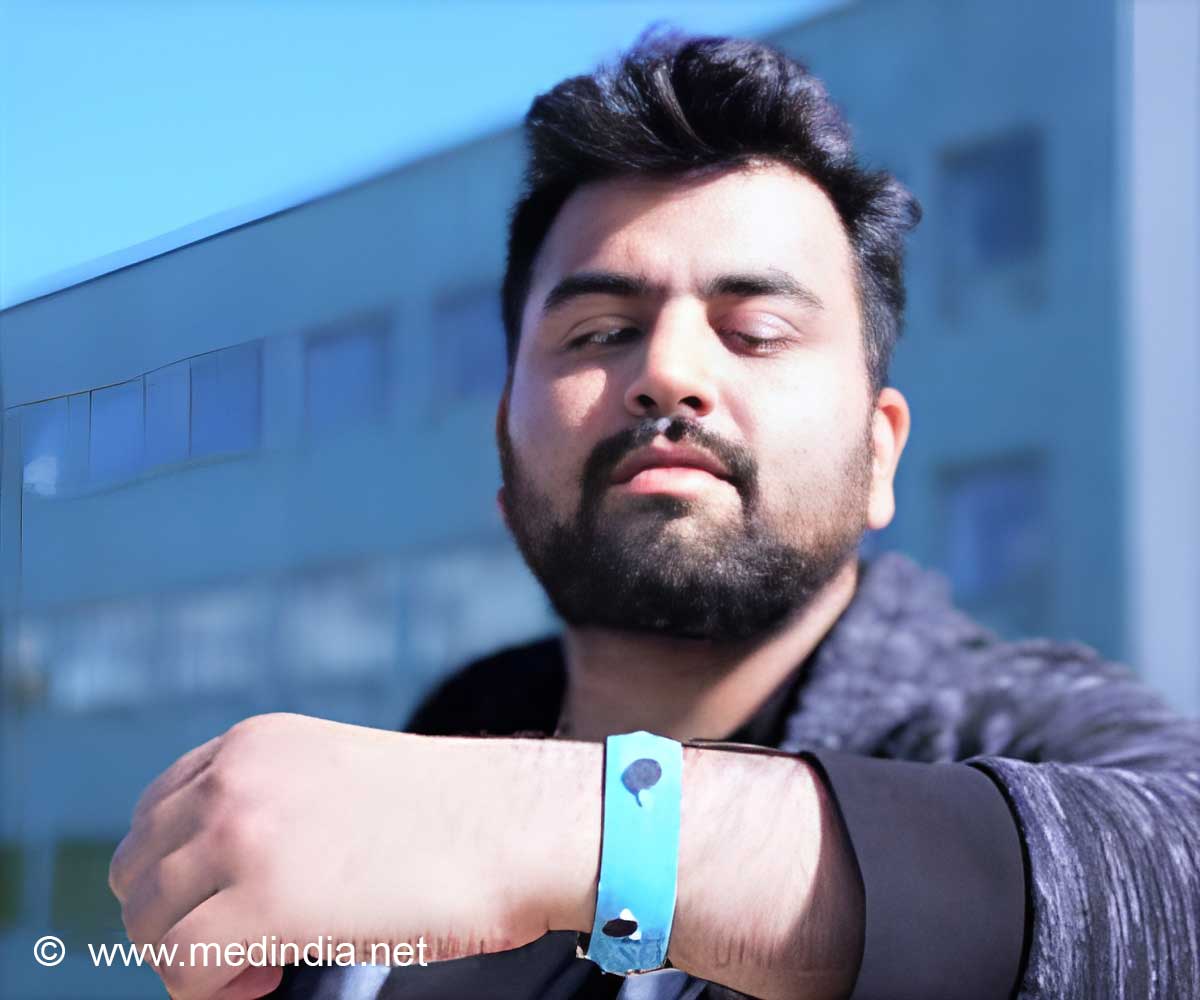No more painful finger pricks! A newly developed screening technique improves the accuracy of wearables, such as smartwatches and smart rings, for tracking blood glucose levels in real time.

Diabetes has become a widespread condition, currently affecting over 500 million adults globally. With no cure currently available for either type 1 or type 2 diabetes, patients need to regularly monitor their blood glucose levels (BGLs) to manage the disease. While traditional BGL-measuring devices have relied on painful finger pricks for decades, advancements in modern technology are gradually paving the way for improved alternatives.
From Finger Pricks to Patch: Role of Wearables in Diabetes Management
Many researchers have proposed noninvasive methods to monitor BGLs, commonly known as blood sugar levels, using widely available wearable devices, such as smartwatches. For example, by placing the LEDs and photodetectors present in certain smartwatches against the skin, oxyhemoglobin and hemoglobin pulse signals can be measured to calculate a metabolic index, from which BGLs can be estimated. However, given the small size and limited power of smartwatches and similar wearables, the data quality of the measured signals tends to be quite low. Moreover, as these devices are worn on extremities, daily movements introduce measurement errors. These problems limit the accuracy and clinical applicability of such wearables for diabetes management.
A team from Hamamatsu Photonics K.K., Japan, has been actively researching this issue, looking for effective solutions. In a recent study led by Research and Development Engineer Tomoya Nakazawa, published in the Journal of Biomedical Optics (JBO) , they conducted an in-depth theoretical analysis of the sources of errors in the metabolic-index-based method. Based on this analysis, they implemented a novel signal quality index to filter out low-quality data as a preprocessing step and thereby enhance the accuracy of estimated BGLs (1✔ ✔Trusted Source
Accuracy enhancement of metabolic index-based blood glucose estimation with a screening process for low-quality data
).
Smartwatches Go Beyond Steps: Glucose Monitoring at Your Wrist
“As smartwatches are widely adopted across different regions and age groups, and with the global rise in diabetes cases, a signal quality enhancing method that is easy to implement and apply regardless of personal and individual differences is absolutely essential for meeting the increasing worldwide demand for noninvasive glucose monitoring devices,” remarks Nakazawa, explaining the motivation behind the study.
First, the researchers mathematically showed that discrepancy between the two types of phase delays in the oxyhemoglobin and hemoglobin pulse signal calculated by different methods provides a good measure of the influence of noise. They then considered two main sources of phase error, namely, a background noise level and the estimation errors introduced via sampling at discrete intervals. After formalizing these sources of errors, they calculated the effect on the estimated metabolic index.
The proposed screening approach involves implementing thresholds for the phase estimation and metabolic index errors. Data chunks that exceed the set thresholds are discarded, and the missing values are approximated using other means based on the rest of the data.
To test this strategy, the researchers conducted a long-term experiment in which the sensors in a commercial smartwatch were used to monitor the BGLs of a healthy individual during “oral challenges.” In each of the 30 tests conducted over four months, the subject would fast for two hours before consuming high-glucose foods. Their BGLs were measured using the smartwatch and a commercial continuous glucose monitoring sensor, the latter of which was used to capture the reference values.
Advertisement
Notably, preprocessing the data with the proposed screening method led to a notable increase in accuracy. Using the Parkes error grid technique to categorize measurement errors, a substantially higher percentage of data points ended up in Zone A when screening was applied. This refers to clinically accurate values that would lead to correct treatment decisions. “Adopting the screening process improved BGL estimation accuracy in our smartwatch-based prototype,” remarks Nakazawa, “Our technique could facilitate the integration of wearable and continuous BGL monitoring into devices such as smartwatches and smart rings, which are typically constrained in terms of size and signal quality,” he adds, highlighting the impact of the research work.
The research team also noted some of the current limitations of smartwatches that lead to inferior performance compared to smartphone camera-based techniques. Though the proposed method could certainly help enhance the performance of the former, hardware improvements in the photodetector and amplifier circuits could go a long way to make wearable electronics a more attractive and clinically acceptable option to monitor BGLs.
Advertisement
Further research in this area will help provide patients with diabetes with powerful tools so that they can manage their condition better, leading to a higher quality of life.
References:
- Accuracy enhancement of metabolic index-based blood glucose estimation with a screening process for low-quality data – (https://www.spiedigitallibrary.org/journals/journal-of-biomedical-optics/volume-29/issue-10/107001/Accuracy-enhancement-of-metabolic-index-based-blood-glucose-estimation-with/10.1117/1.JBO.29.10.107001.full)
Source-Eurekalert



